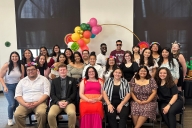You have /5 articles left.
Sign up for a free account or log in.
Researchers are trying to understand why the vast majority of students fail to finish free online classes and who is signing up for the classes to begin with.
One widely quoted dropout figure for students in massive open online courses is 90 percent. The number would be staggeringly high for a traditional class and has been used to cast doubt on the promise of MOOCs.
The number is simple to come up with: take the number of users who register for a course and compare it to the number still participating at the end. But is it fair?
Some researchers say MOOC dropout figures being bandied about do little to describe why hundreds of thousands of people across the world are signing up for MOOCs in the first place. All but a few of the courses offered by MOOC providers are free and don’t earn students any college credit. There are also no enforced prerequisites as there are for normal college courses.
That’s why it may not make sense to compare the number who register to the number who finish. The widely cited numbers may be "largely missing the point," said Andrew Ho, a Harvard University assistant professor of education who is involved in some MOOC-related research. He said researchers are trying to see what different kinds of people are signing up for the online classes and what their goals are. Some clearly do not intend to ace or even take every test, nor want to earn a largely meaningless certificate of completion.
"What we're trying to do is distinguish between them in a meaningful way," Ho said.
People who register for MOOCs are said to include precocious high school students, college students looking for more ways to study a subject they are learning in a traditional classroom and faculty who want to watch how other faculty teach their subject.
Some users -- including stay-at-home parents or retirees -- may sign up for the same reason they do a Sunday crossword puzzle, said Yvonne Belanger, the head of assessment and planning for the Center for Instructional Technology at Duke University.
“They have nothing more than, ‘This is a good way to spend my free time – it’s better than television,' ” she said.
Belanger worked on a recent summary of enrollment in a bioelectricity MOOC Duke offered through Coursera. Only about 350 of the 12,700 or so Coursera users who registered for the course took the final exam, a dropout rate of 97 percent.
The course lost a fourth of its students before it truly began. Nearly 5,000 signed up for the course but didn’t watch even the first lecture.
The completion rate for the Duke course looks dramatically better if the comparison starts with the number of students who answered at least one question right on the first quiz. About a fourth of them finished the course.
Even that figure doesn’t give credit to the population of people who just want to watch the lectures and not take quizzes -- akin to auditors in a traditional classroom -- or the users who were simply seeking what Belanger called “a social experience that is intellectually stimulating.” She said even students who kept taking the course but didn’t earn a completion certificate still rated the course highly.
“What’s the goalpost?” she said.
The National Science Foundation put $200,000 toward a study of MOOC users. The study, led by the Massachusetts Institute of Technology’s Teaching and Learning Laboratory, is based on a detailed look at data from edX’s circuits and electronics course last year. EdX was founded by MIT and Harvard University.
Jennifer DeBoer, a postdoctoral associate at the MIT teaching lab, is working on the study to categorize people who take MOOCs. Those categories could then provide a framework for future studies.
“I wouldn’t say we have one dropout rate for all of them,” DeBoer said. “We have different students who are participating for different reasons.”
She said the team is still fine-tuning the categories for its paper, which will be made public in a month or two.
Phil Hill, an education technology consultant, has come up with four categories of MOOC users: lurkers, drop-ins, passive participants and active participants.
Any existing groups could change if MOOCs start charging for entry or make other changes to their registration process.
“I don’t know how long MOOCs in this current form will last,” Belanger said. “I think [users] just plan to enjoy it while it lasts.”







